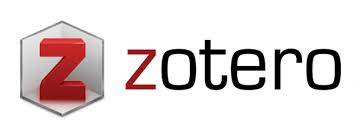KONTRIBUSI USAHA TERNAK BABI TERHADAP PENDAPATAN RUMAH TANGGA NELAYAN DI DESA NEMBRALA, KECAMATAN ROTE BARAT, KABUPATEN ROTE NDAO
Abstract
A study that aims to determine the contribution of livestock business to the income of fisherman households in Nembrala Village, West Rote District, Rote Ndao Regency. The method used in this research is survey method with interview techniques using questionnaires to 25 respondents were selected purposively. Data was analyzed using mean and standard deviation analysis, followed by a descriptive-qualitative analysis.The result showed that the average ownership of pig was 2.64±0.99 head, the average cost of production of pigs 4,247,600.00±1,553,559.17IDR, the average revenue of pigs 7332000±2577148.38IDR, the average profit of pigs 3084400±1387765.23IDR, the average total household income of respondents is 8216400±995288.40 IDR, and the average contribution of pigs effort 37.02±16.25%.Based on the above results, it can be concluded that the contribution of pig efforts to the income of fisherman households in Nembrala Village is high enough, so that pig efforts can become alternative livelihoods in increasing household income of fishermen.
ABSTRAK
Suatu penelitian yang bertujuan untuk mengetahui kontribusi usaha ternak terhadap pendapatan rumah tangga nelayan di Desa Nembrala, Kecamatan Rote Barat, Kabupaten Rote Ndao. Metode yang digunakan dalam penelitian ini adalah metode survei dengan teknik wawancara menggunakan kuisioner terhadap 25 orang responden yang dipilih secara purposive. Analisis data dilakukan dengan analisis rataan dan simpangan baku, yang dilanjutkan dengan analisis deskriptif-kualitatif. Hasil analisis data menunjukkan bahwa rataan kepemilikan ternak babi 2,64±0.99 ekor, rataan biaya produksi ternak babi Rp. 4247600.00±1553559.17, rataan pendapatan usaha ternak babi Rp. 7332000±2577148.38, rataan keuntungan ternak babi Rp. 3084400±1387765.23, rataan total pendapatan rumah tangga responden ormal responden adalah 8216400±995288.40, dan rataan kontribusi usaha ternak babi 37.02±16.25%. Berdasarkan hasil penelitian di atas dapat disimpulkan bahwa kontribusi usaha ternak babi terhadap pendapatan rumah tangga nelayan di Desa Nembrala cukup tinggi, sehingga usaha ternak babi dapat menjadi alternatif usaha dalam peningkatan pendapatan rumah tangga nelayan.
Downloads
References
Ginting C dan Prabatmodjo H. 2015. Kondisi kemitraan nelayan kawasan pesisir Kecamatan Pantai Labu sebagai basis pengembangan ekonomi lokal. Jurnal Perencanaan Wilayah dan Kota. B SAPPK V4N2
International Livestock Research Institute, 2011. The smallholder pig value chain: An opportunity for growth and poverty reduction, Kampala, Uganda, Nairobi, Kenya. International Livestock Research Institute.
Kagira JM., Kanyari PW., Maingi N., Githigia SM., Ng’ang’a, JC. & Karuga, JW., 2010. Characteristics of the smallholder free-range pig production system in Western Kenya. Tropical Animal Health and Production. (42): 865 – 873.
Lapar L. and Staal S, 2010. Competitiveness of smallholder pig producers in Vietnam, improving the competitiveness of Pig producers in Vietnam, Nairobi, Kenya. International Livestock Research Institute.
Maharjan KL. & Fradejas CC. 2006. Role of cooperative in improving accessibility to production resources and household economy of backyard Pig raisers in Batangas, Philippines. Gold Coast, Australia. 1 - 4.
Mtileni BJ., Phitsane PM. & Nengovhela NB., 2006. Developing an integrated support system to achieve a continuous profitability amongst the Resource Poor Farmers of North West, Limpopo and Mpumalanga provinces of South Africa: A case study. South African Society for Animal Science. 7: 1 - 4.
Mpofu I. & Makuza SM. 2003. Pig Production Science And Technology. First Edition. United Kingdom. Upfront Publishing.
Paulus CA. 2016. The development of sustainable livelihoods for peasant-fisher in Rote Island East Nusa Tenggara. International Conference on Technology, Innovation, and Society (ICTIS). DOI 10.21063/ICTIS.2016.1021. Proceeding. ITP PRESS. Padang.
Paulus CA dan Sobang YUL. 2017. Alternative livelihood” strategy to improve social resilience of fisher households: a case study in Nembrala Village of Rote Ndao Regency. ECSOFiM: Economic and Social of Fisheries and Marine Journal. Vol 5 (1): 13-21. Available online at http://ecsofim.ub.ac.id/.
Paulus CA and Fauzi A. 2017. Factors affecting sustainability of alternatives livelihood in coastal community of Nembrala, East Nusa Tenggara: an Application of Micmac Method. http://journals.ums.ac.id. DOI: 10.23917/jep.v18i2.4397. Jurnal Ekonomi Pembangunan, 18 (2), 2017, 175-182.
Petrus NP, Mpofu I, Schneider MB & Nepembe M. 2011. The constraints and potentials of pig production among communal farmers in Etayi Constituency of Namibia. Livestock Research for Rural Development, 23(7).
Phengsavanh P., Ogle B, Stür W, Frankow-Lindberg BE & Lindberg JE. 2011. Smallholder pig rearing systems in Northern Laos PDR. Asian - Australasian Journal of Animal Sciences. 24(6): 867 - 874.
Rakhmanda, A. 2014. Mengurai akar kemiskinan masyarakat nelayan. Opini. Sosial Ekonomi. Forum Kajian Perikanan. Jurusan Perikanan. Fakultas Pertanian. Universitas Gajah Mada. Yogyakarta. [http://www.kajianperikanan.com/]
Retnowati E. 2011. Nelayan indonesia dalam pusaran kemiskinan struktural (perspektif sosial, ekonomi dan hukum). Perspektif 16 (3). Tahun 2011 Edisi Mei.
Rote Ndao Dalam Angka. 2015. Badan Pusat Statistik Kabupaten Rote Ndao, Baa
Sobang YUL. 2005. “Karakteristik sistim penggemukan sapi pola gaduhan menurut zona agroklimat dan dampaknya terhadap pendapatan petani Di Kabupaten Kupang NTT”. Bulletin Nutrisi. 8 (2): 71 – 76. Maret 2005, ISSN: 1410 – 6191.
Umesh, Joseph C, OgbanjeC and Adejo MA. 2015. Technical efficiency analysis of pig production: A Sustainable Animal Protein Augmentation for Nigerians. Journal of Advanced Agricultural Technologies. 2 (1), June 2015.
 Yohanes U.L Sobang(1*)
Yohanes U.L Sobang(1*)





.jpg)





